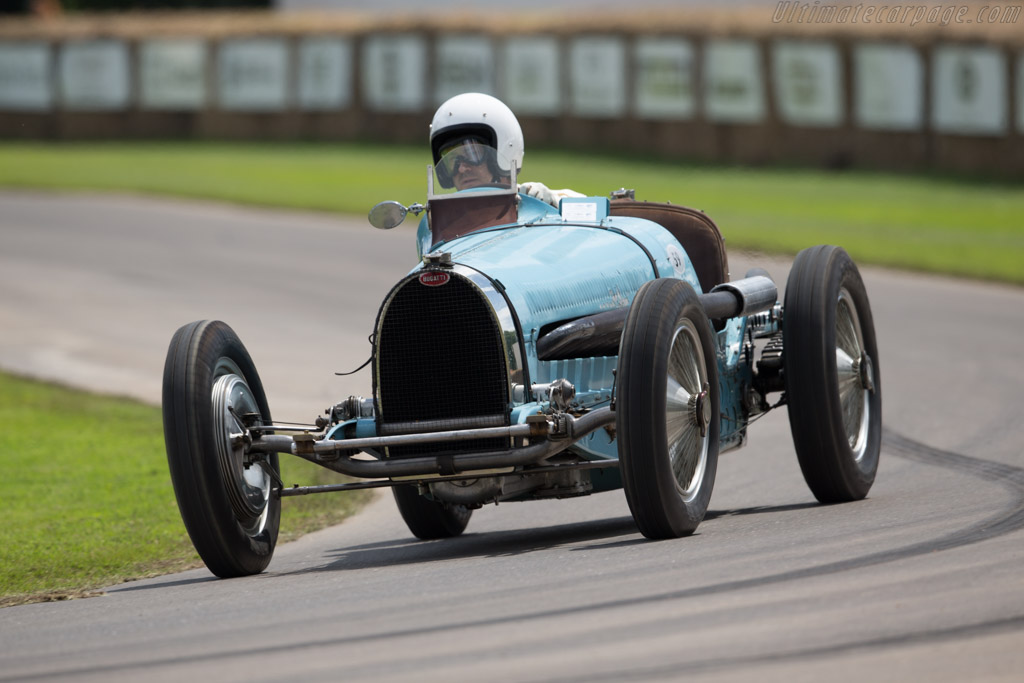1934 Bugatti Type 59 Grand Prix

The descriptions of the Classic Cars in the Directory were partly generated or supplemented with the help of artificial intelligence (AI). The content may occasionally not always be entirely accurate or factually correct despite careful checking.
The Bugatti Type 59 is a masterpiece of engineering from the 1930s that is renowned for its exceptional performance, impressive style, and advanced design features. This legendary Grand Prix car was first unveiled at the Paris Auto Salon in 1933, and quickly emerged as one of the most dominant force in the racing terrain, winning numerous Grand Prix championships.
The Type 59 boasts of a potent engine that was designed and built completely in-house by Bugatti's engineering team. The supercharged 3.3-liter straight-eight engine churns out an incredible 250 horsepower at 5,000 revolutions per minute, which made it one of the most powerful engines of its time. The engine's sophisticated design features three valves per cylinder and dry-sump lubrication system compared to the previous Type 57S.
The Bugatti Type 59 was also fitted with advanced suspension technologies, including its independent front suspension, alongside a de Dion rear axle, which provided a smooth and confident ride at high speeds. The car's frame was constructed using uncompromisingly lightweight materials such as magnesium and aluminum, which were paired with an aerodynamic bodywork design that provided minimal air resistance.
In terms of braking technology, the Type 59 featured hydraulic drum brakes for optimal stopping power. These brakes were fitted onto each wheel to ensure that the car could handle the immense power that its engine provided.
Despite its advanced technical features, the Bugatti Type 59 was relatively easy to drive, which made it a popular choice for both seasoned and amateur racing drivers. The cockpit was designed with driver comfort and convenience in mind - it featured an adjustable steering wheel and foot-activated accelerator and brake pedals.
In conclusion, the Bugatti Type 59 is a timeless classic that is revered to this day as an engineering masterpiece that epitomizes the best of automobile design technology from the 1930s. Its unique combination of advanced technical features, superior driving dynamics, and eye-catching aesthetics have made it a favorite among car collectors and enthusiasts alike.
Milestones
- Introduced at the Paris Motor Show in 1933 - First raced by Achille Varzi at the Belgian Grand Prix in 1934 - Varzi won the Tunis Grand Prix in 1934 with the Type 59 - Engine had a displacement of 3,257 cc and produced 250 hp - Four-valve DOHC inline-eight engine designed by Ettore Bugatti - Featured a four-speed manual transmission - Top speed of approximately 135 mph - Only 8 Type 59s were built, making it very rare and valuable today - Fitted with Girling drum brakes and a live rear axle - Competed in the European Grand Prix from 1934 to 1936 - Only Type 59 to win a championship was driven by Rene Dreyfus in 1934 Monaco Grand Prix.Technical
- The Bugatti Type 59 Grand Prix was a racing car produced by Bugatti in 1934. - It was powered by a 3.3-liter inline-eight engine with a supercharger. - The engine produced around 250 horsepower, which was impressive for its time. - The Type 59 also had a four-speed manual transmission and a rear-wheel drive system. - The chassis was made of steel tubing, while the bodywork was fashioned from lightweight aluminum. - The car weighed around 1,500 pounds, making it relatively lightweight compared to other cars of the era. - The Type 59 had independent front suspension with transverse leaf springs and a live rear axle with quarter-elliptic leaf springs. - The front brakes were hydraulic while the rear brakes were mechanical, and the car had a top speed of around 130 miles per hour. - Bugatti produced just eight examples of the Type 59 Grand Prix, making it one of the rarest and most sought-after racing cars in the world today.